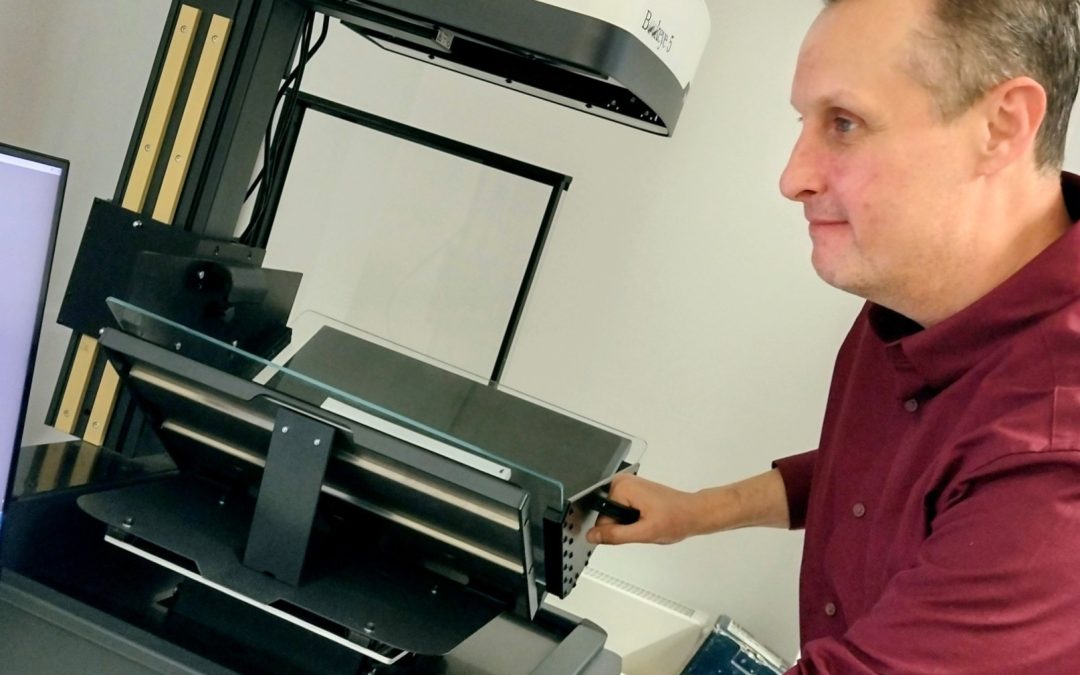
Oct 31, 2025 | Articles
How libraries around the world are building accessibility into the heart of resource sharing
By Kip A. Darling
Abstract:
This article explores how Birmingham City University transformed its document delivery workflow through cross-team collaboration, aligning local service improvement with global accessibility goals. It situates this change within the wider RapidILL community, where libraries across the UK, U.S., Canada, and Australia are adapting to new accessibility regulations and expectations. Drawing on practitioner insights and vendor perspectives, it highlights how technological advances and shared standards are shaping a more inclusive future for international resource sharing.
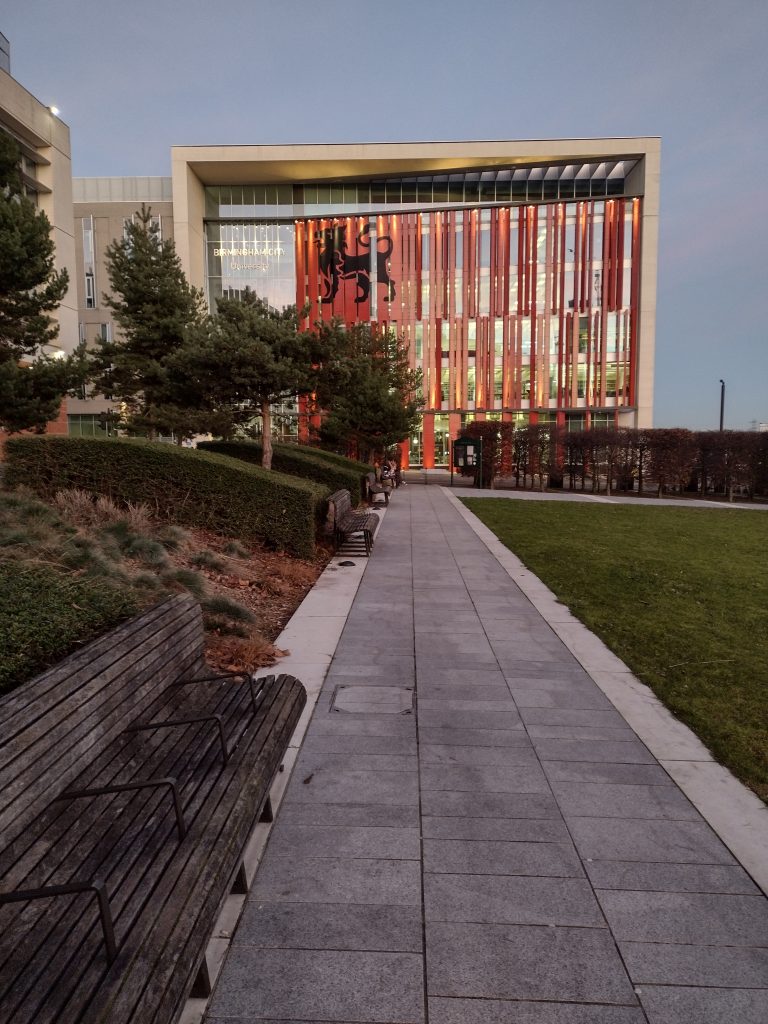
Curzon Building, home of Curzon Library at Birmingham City University. Photo provided by Kip A. Darling, used with permission.
At Birmingham City University, our Inter-Library Loans (ILL) team once processed RapidILL scans using traditional flatbed scanners scattered across campus. The process was labour-intensive: lining up books against L-shaped corners, flattening them on the scanning plate, capturing one double-page spread at a time, and repeating until finished. Each scan then required manual editing in Adobe Acrobat Pro—rotating pages, cropping blank spaces (and the occasional wristwatch or hairy arm)—followed by a slow page-by-page OCR process with inconsistent results depending on staff skill and patience.
At our satellite libraries, Library Experience and Stock Management staff helped whenever possible, fitting scans around other duties. Although we set performance goals to support accessibility, the reality was that we were working toward that vision one scan at a time rather than systematically.
Restructure as Opportunity
A departmental restructure in late 2024 that initially challenged our staffing levels became a catalyst for change. Library Experience gained new responsibilities and could no longer assist with scanning, while the Stock Management team were redeployed elsewhere. Our ILL team also lost staffing hours, leaving us at a crossroads: either manage with less or take a chance on something better.
Enter our Digitised Services team. They had long provided scans for reading lists and alternative formats for disabled users and were equipped with professional-grade tools. Following a conversation between team coordinators, they offered to fill the gap in our RapidILL lending service provision.
Partnership in Practice
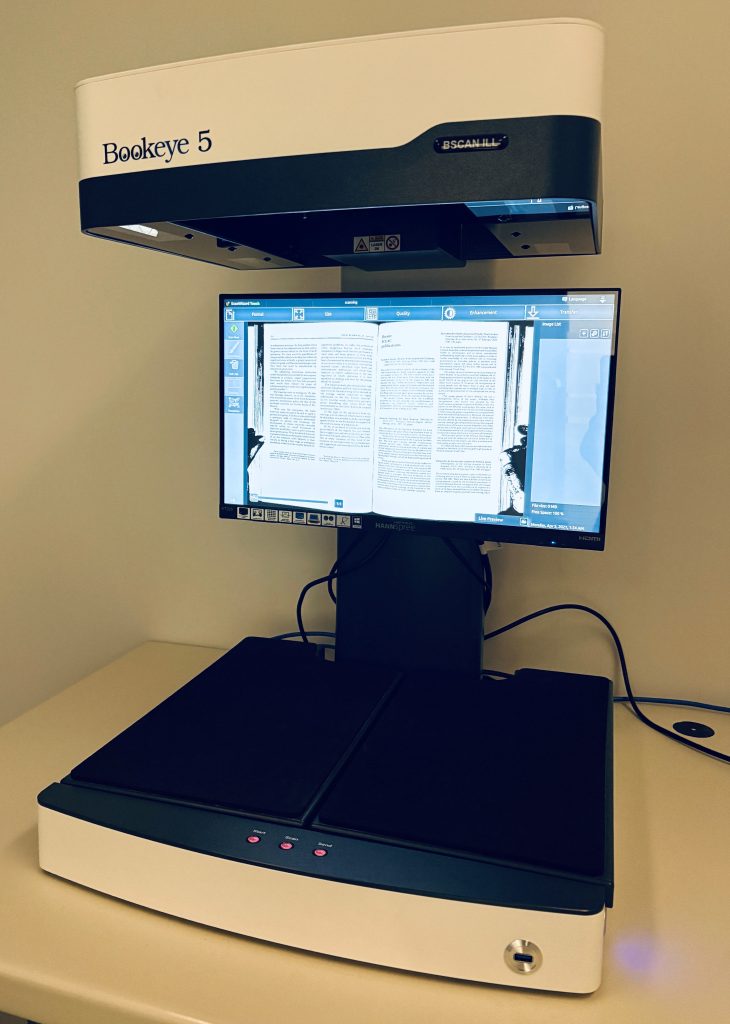
BookEye 5 scanner in use at Queen’s University. Image provided by Nicola Sikkema, used with permission.
Our cross-functional approach soon proved more effective than either team could have achieved alone.
Lee Jones, Coordinator of the Digitised Services team, explains:
“ILL staff handle subject-matter expertise around copyright and patron needs, while we focus on the technical aspects. All requests are logged and tracked, enabling real-time statistics and valuable service insights.
Our equipment includes a Bookeye 5 Archive overhead scanner and ABBYY FineReader software, allowing us to produce high-quality, fully OCR’d documents that meet professional accessibility standards—something difficult and time-consuming to achieve with traditional multifunction devices.”
The Bookeye’s self-adjusting V-shaped cradle preserves book spines while scanning at 120°, and its matching glass plate ensures pages are flat for crisp images ready for OCR. With a 180° glass option for flat items, scan quality up to 600 dpi, and sizing up to A2, the device covers virtually every need.
Once the scan is complete, ABBYY FineReader provides excellent OCR accuracy. Errors are checked and corrected by Digitised Services staff, resulting in accessible PDFs that work reliably with screen readers and other assistive technologies.
“It’s rewarding to know that we’re supporting both our own students and the global RapidILL community,” says Jones. “The consistent quality we deliver helps other libraries serve users with disabilities effectively.”
Meeting International Standards
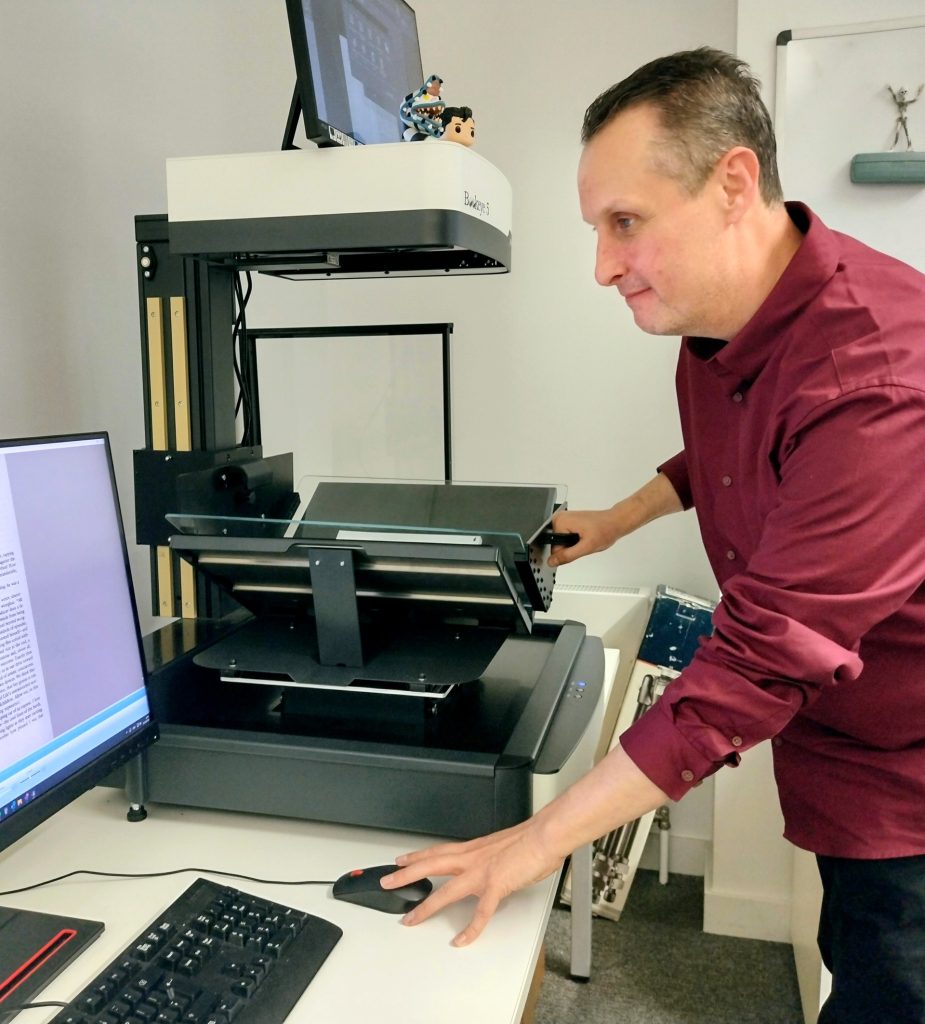
Lee-Jones in the BCU Digitised Services Office. Photo provided by Kip A. Darling, used with permission.
RapidILL now connects over 850 institutions across 36 countries, representing diverse accessibility practices. Australian libraries, for instance, often include title and verso pages in chapter scans—a convention we’ve adopted at BCU. Yet the most significant driver for improved accessibility comes from regulatory change in the United States.
The U.S. Department of Justice’s final rule on Title II of the Americans with Disabilities Act (ADA), published April 24, 2024, requires public academic libraries to ensure their digital services meet WCAG 2.1 AA standards by April 2026. This rule emphasises usability for people with disabilities, not just technical compliance.
In the UK, the Equality Act 2010 and the Public Sector Bodies (Websites and Mobile Applications) Accessibility Regulations 2018 require compliance with WCAG 2.2 AA standards. Although not specific to document delivery, the expectation that accessibility applies across all digital services is increasingly recognised in higher education.
(The authors are library practitioners, not legal professionals. Libraries should consult institutional legal counsel when interpreting accessibility requirements.)
By providing consistently high-quality, accessible scans, libraries contribute to a more inclusive international network of scholarly resources.
U.S. Perspective: Navigating Regulatory Requirements
Courtney Taulbee from the University of Kentucky provides valuable insight into how libraries are interpreting and responding to these regulatory changes:
“The implementation of ADA Title II requirements represents a significant shift for U.S. libraries, particularly those that are government or public institutions. The web content provided from these institutions that fall under the law, like public universities, must meet WCAG 2.1 AA standards by April 2026. This includes content licensed from third-party vendors, such as electronic resources.”
Taulbee notes the collaborative nature of the library community’s response:
“While institutions are determining at a local level how to interpret the law and how it affects their workflow and services, conversations in the ILL community are taking place to determine how best to meet the federal regulations. While not every library may be required to follow this law, the importance of meeting and improving accessibility within our work is widely valued within library services.”
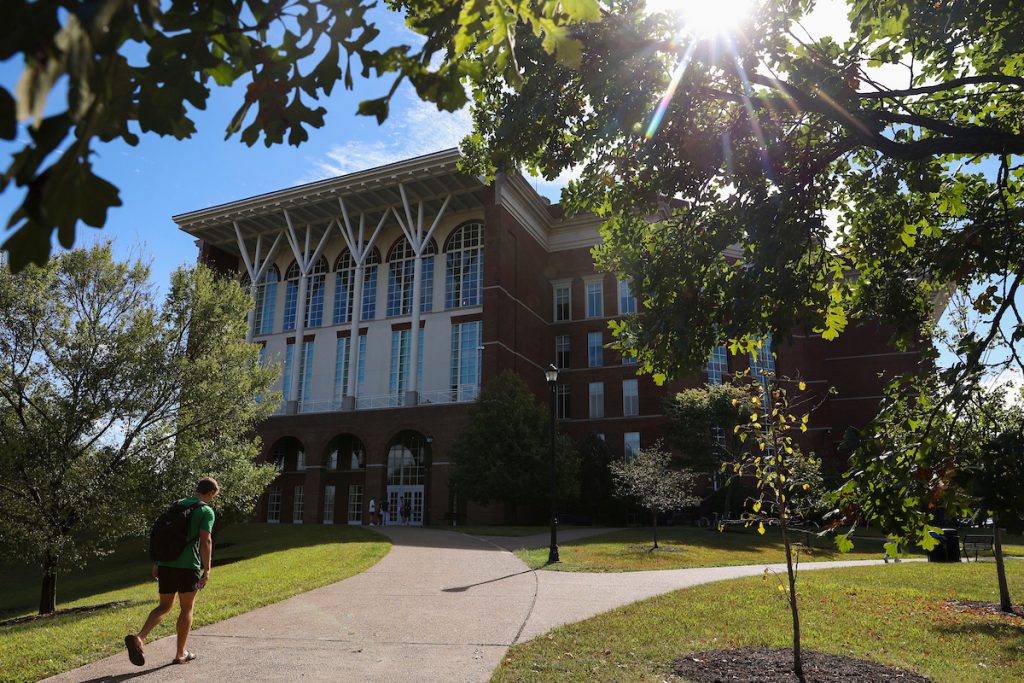
The University of Kentucky’s William T. Young Library. Image credit: Carter Skaggs, University of Kentucky Public Relations, used with permission.
Vendor engagement has become a key strategy:
“Working with our vendors is an essential first step. Our licensed electronic materials need to meet federal guidelines, so ensuring this is built into our vendor contracts allows us to meet one of the accessibility requirements for our users. This also helps with interlibrary loan lending practices, knowing that resources we receive are already in accessible formats.”
For materials that require scanning, automation helps but human review remains essential:
“At the University of Kentucky Libraries, we use scanners that include OCR as part of the process. However, technology does have limitations, so even default automations may require manual intervention from time to time.”
Taulbee’s vision for the future echoes a broader goal:
“Ideally, whether the requested content is born-digital or scanned in-house, the systems and platforms used in ILL services should have accessibility features built in. That way, libraries without the staffing or resources to meet accessibility standards independently can still rely on ILL systems to deliver accessible documents.”
This demonstrates how U.S. regulatory requirements are driving improvements that benefit the entire international community.
“By vendors including these components,” Taulbee concludes, “we not only meet legal obligations but also serve patrons better by providing content that is easier to use. Advocating for this with vendors is important, particularly as ILL services expand and evolve.”

Joseph S. Stauffer Library at Queen’s University, Canada. Image provided by Nicola Sikkema, Queen’s University, used with permission.
Canada’s Vision: An Inclusive, Barrier-Free Solution
Canadian libraries operate within their own accessibility framework but face similar challenges in serving diverse users. Nicola Sikkema from Queen’s University in Kingston describes the national context:
“Canada aims to become an inclusive and barrier-free country, introducing legislation such as the Accessibility for Ontarians with Disabilities Act (AODA) in 2005, which targets accessibility by 2025, and the Accessible Canada Act (ACA) in 2019, a federal law striving for a barrier-free Canada by 2040. How resource sharing digitisation falls within this legislation is ambiguous, but many Ontario universities want to develop shared best practices for accessible digitisation.”
This goal involves significant coordination.
“In 2019, the Ontario Council of University Libraries (OCUL) launched a shared library platform uniting 19 institutions, including Queen’s. Sharing resources brings the added benefit of shared workflows, but creating consistent standards for accessible digitisation remains a challenge due to differences in equipment, software, and staffing.”
At Queen’s University, a local solution emerged:
“We now provide scans that are searchable and readable by screen readers. Last year we purchased a Bookeye scanner and BSCAN ILL software, which removes fingerprints, makes files searchable, and outputs readable documents—all in one program.”
However, monitoring scan quality across automated workflows remains difficult.
“In the early days of RapidILL, we checked all articles for OCR quality before sending them to users,” Sikkema notes. “As staff capacity declined, we shifted to automatic delivery, meaning we could no longer review every file manually.”
Despite these constraints, Canadian libraries are actively testing innovations:
“As part of my work with the Alma Resource Sharing Working Group, we’ve tested sending alternative formats such as EPUB through RapidILL. Although results are promising, we still need vendor improvements to ensure lending libraries can view format-specific request notes.”
Looking ahead, Sikkema sees collaboration as key:
“April 2026 will bring new accessibility rules for our U.S. partners. Although compliance will be challenging, these changes will promote equal access. The majority of our RapidILL requests come from international partners; we hope our own best practices will help support them.”
Australian Innovation: Proactive Accessibility Approaches
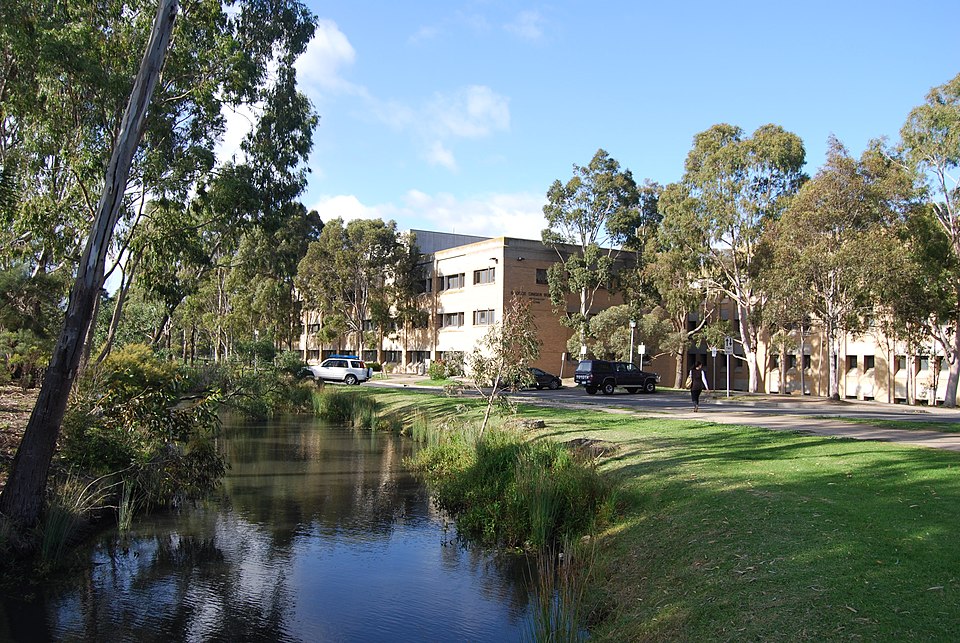
Moat with the George Singer Building in the background at La Trobe University, Bundoora, Australia. Image by Phil Lees via Wikimedia Commons, licensed under Creative Commons.
Australian libraries are also leading with proactive solutions. Karen O’Donoghue from La Trobe University Library reflects on the journey:
“The need to make educational materials equally available to all our patrons has been an ongoing aim. Early efforts involved photocopying chapters and posting them to patrons’ homes. Fast forward twenty years, and eBooks and electronic document delivery seemed like the answer—until publisher restrictions on downloading and printing began to limit accessibility.”
Recognising the issue, La Trobe shifted from reactive fixes to proactive service design:
“We saw that staff were responding to accessibility issues only after students received inaccessible files. In 2024, we introduced a new online request form allowing patrons to select their preferred format—large print, Word, audio, and more—with space for additional details. Library staff can now tailor delivery on first supply, and patrons appreciate the improved communication and accessibility.”
This approach demonstrates how understanding user needs upfront transforms accessibility from a corrective task into a preventative service model.
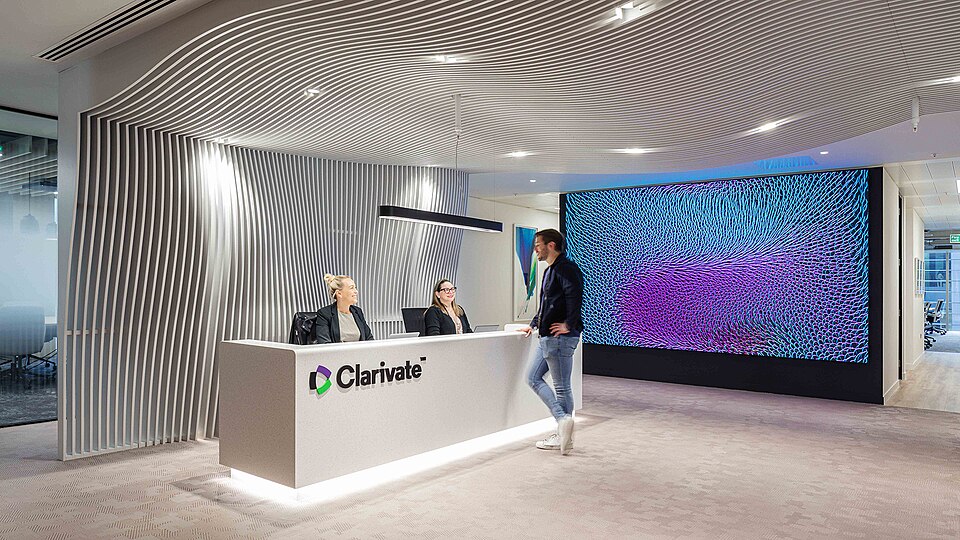
Main Reception at Clarivate Headquarters. Photo by Mictam999 via Wikimedia Commons, licensed under Creative Commons.
The Future: Technical Integration and Automation
Mike Richins, Director of Product Management, Resource Sharing at Clarivate, offers a vendor perspective:
“As the RapidILL, Rapido, and Alma Resource Sharing communities grow worldwide, Clarivate is uniquely positioned to support libraries and their users. Our goal is to provide access to materials not available locally as quickly and efficiently as possible through automation, reduced staff time, and equitable request distribution.”
Richins emphasises accessibility as a core design principle:
“We’re proud to collaborate with a global network of libraries committed to sharing their resources. Accessibility is now central to our conversations with libraries and informs our development roadmap.”
Recent enhancements demonstrate this focus:
“RapidILL now preserves any accessibility features in lender-provided files, ensuring those features are retained across different resource-sharing systems. Borrowers receive files with all accessibility elements intact, regardless of which systems are in use.”
Looking ahead to the ADA compliance deadline, Clarivate is developing new solutions:
“We’re implementing automated OCR processing for files lacking text recognition. With U.S. libraries facing the April 2026 ADA deadline, our goal is to have this in place beforehand, so all users receive accessible documents by default.”
Automation at this level could transform global accessibility, allowing libraries with limited technical capacity to provide consistently inclusive content.
Community Standards and Mutual Support
The strength of the RapidILL community lies in its reciprocity—libraries supporting one another across borders and time zones. When U.S. institutions face stringent accessibility requirements, the quality of scans provided by partners like BCU directly impacts their ability to serve users with disabilities. Similarly, Canadian and Australian initiatives contribute new ideas and workflows that raise standards globally.
This spirit of collaboration extends beyond compliance. By sharing best practices and maintaining high-quality standards, we collectively lift expectations across the network. Libraries in regions without strict legal obligations often exceed baseline requirements because they recognise their global role. This approach was exemplified in a recent ELUNA survey gathering best practices and case studies to drive community-powered training and advocacy for change.
Looking Forward
As we continue refining our processes, we remain mindful of our responsibility to the broader RapidILL community. The regulatory landscape continues to evolve, and user expectations for accessible content are rising too. Libraries that invest in accessible document delivery today position themselves as leaders in inclusive resource sharing.
Our journey from manual scanning to professional digitisation represents more than operational improvement—it reflects a commitment to ensuring that geographical location or institutional resources never determine access to scholarly materials. In an increasingly connected world, accessibility is not just a local concern; it is a global responsibility.
Acknowledgements
The author wishes to thank Lee Jones (Birmingham City University, UK), Karen O’Donoghue (La Trobe University, Australia), Courtney Taulbee (University of Kentucky, USA), Nicola Sikkema (Queen’s University, Canada), and Mike Richins (Clarivate) for their generous contributions and insights, which illustrate the international and industry dimensions of accessible document delivery.
Additional resource:
Orbis Cascade Alliance Accessibility Toolkit: https://www.orbiscascade.org/programs/dux/documentation/accessibility-toolkit/

Feb 18, 2025 | Articles

1997 – A bitter sweet symphony of a year
In March 1997, the UK was on the cusp of change. A general election loomed, promising a shift in political direction, but beyond Westminster, transformations were taking place in education, technology, and libraries. Issue 24 of The FIL Newsletter captures a sector grappling with its own evolution—balancing tradition with modernisation, adjusting to market-driven reforms, and expanding access to information in new ways.
The Fat of the Land
One of the most pressing concerns in 1997 was funding. The newsletter contains multiple discussions on how libraries should manage document supply services in an era of financial scrutiny. There was debate over whether charging models were making access fairer or simply creating barriers. A report from the British Library Document Supply Centre (BLDSC) acknowledged this tension:
“While we recognise the need for cost recovery, we must also consider the impact on smaller institutions and their ability to participate in interlending networks.”
This concern mirrored broader discussions in education—university enrolment was expanding, but so was student debt. Libraries, like students, had to navigate new financial realities. BLDSC’s move to a banded pricing model was met with resistance, with one contributor remarking that:
“the new system benefits larger institutions at the expense of smaller libraries, effectively sidelining those with fewer resources.”
Libraries in 1997 were dealing with market shifts that would have lasting impacts. There were concerns that increased costs could drive some institutions to commercial suppliers instead. One article warned:
“If libraries do not assert their role in document delivery, commercial interests will step in and set the terms.”
This was an early recognition of a trend that continues today—the increasing tension between open access ideals and commercial control of academic resources.
OK Computer
The newsletter is filled with cautious optimism about emerging technologies. Fax remained an important tool, but electronic document delivery was increasingly seen as the next frontier. While some were eager for change, others remained sceptical, preferring the familiar over the untested. One contributor admitted:
“Fax is still how I send most of my requests—it’s reliable, immediate, and at least we know it works!”
This parallels the wider digital revolution – In 1997, UK households were starting to embrace home internet access, yet connectivity was slow and expensive. Just as individuals were adjusting to online life, libraries were determining how best to integrate digital tools into their services. The newsletter highlights pilot projects exploring email-based document supply, with some libraries reporting early successes but also raising concerns about copyright compliance and technological reliability.
Dig Your Own Hole
Another undercurrent in Issue 24 was the growing anxiety over copyright compliance. Changes in copyright law were beginning to place greater constraints on interlibrary lending, and some librarians expressed frustration over restrictive interpretations. One contributor argued:
“The increasing complexity of copyright regulations makes it harder for libraries to serve their users. We spend more time checking what we can and cannot supply than actually supplying documents.”
This issue was particularly relevant as electronic document delivery gained traction. Some feared that digital copies would be subject to stricter controls than their print counterparts, a concern that has since proven well-founded in modern licensing agreements. The newsletter called for clearer guidance on how copyright law should be applied to evolving technologies, echoing a debate that continues to shape library services today.
Be Here Now
The March 1997 FIL Newsletter presents a snapshot of an interlending world in flux. Economic pressures, technological advancements, and shifting market dynamics all shaped the discussions of the day. Some of these issues feel firmly rooted in their time, but others remain strikingly relevant. Libraries today still wrestle with questions of cost, access, and their place in an increasingly digital world. In 1997, interlending stood at a crossroads—caught between old and new, balancing tradition with the push for modernisation. There was a sense of optimism, of libraries expanding their reach and influence, yet also a quiet anxiety about the forces shaping the future.
You can read issue 24 of The FIL Newsletter in our journal archive.

Feb 13, 2025 | Articles

Interlibrary Loans 1989 Style!
As FIL continues to evolve and embrace new challenges, it’s worth taking a moment to reflect on where we started. The FIL journal archive offers a fascinating record of interlending’s journey, and what better place to begin than the very first issue?
Ah, 1989—the year when Indiana Jones, James Bond and Marty McFly slugged it out at the box office and were beaten by Tim Burton’s Batman; the Berlin Wall was still standing (just about), and interlibrary lending was very much a world of printed request slips, microfiche, faxes, and waiting. Lots of waiting.
The very first Forum for Interlending Newsletter landed in June that year, full of discussions that still feel oddly familiar today. Costs, cooperation, technology, and the eternal question: how do we get things to people faster? Some things never change…
Coventry, Conferences, and Collaboration
FIL itself was just getting going, fresh from the success of “Interlend ’88” at Coventry Polytechnic. The conference had drawn together library professionals from across different sectors, and the buzz resulted in a new network for sharing ideas. By mid-1989, FIL had over 100 members, and its first newsletter was setting the tone for regular discussion.
One of the big topics? Who pays for interlending? The upcoming “Interlend ’89” conference was tackling this very issue. Libraries were wrestling with budget constraints, user expectations, and the sustainability of services. Sound familiar?
The Future Was… Automation?
Technology was another hot topic, with Lancaster University’s PICKUP system getting a mention as an early attempt at automation. The newsletter also highlighted experiments with teleordering and the potential of online catalogues—ideas that, at the time, seemed both exciting and slightly futuristic. Meanwhile, faxes were hailed as a game-changer, dramatically speeding up the request process compared to traditional postal methods. Of course, even faxing had its frustrations—blurry pages, missing transmissions, and the occasional paper jam.
Looking at then versus now, it’s striking how interlending remains a balance between speed, cost, and collaboration. In 1989, waiting weeks for a journal article was standard; today, many requests arrive digitally within minutes—but barriers like paywalls still cause delays. Budgets were tight then, and they’re still a challenge now. The optimism around new technologies in the newsletter—whether automation, teleordering, or shared databases—mirrors today’s conversations about AI and linked data. What has endured is the commitment to resource-sharing, and the belief that no library can—or should—stand alone.
Looking Back, Moving Forward
Reading that first FIL newsletter, it’s striking how much has changed—but also how much has stayed the same. The tools have evolved, the challenges have shifted, but at its core, interlending is still about libraries working together to get people the resources they need.
So, while we might smile at the thought of 1989’s cutting-edge innovations, the drive to improve access to knowledge is something we can all still relate to. And who knows? Maybe in another 35 years, people will be looking back at our “cutting-edge” systems with the same fond amusement…
You can read issue 1 of The FIL Newsletter (as it was known back then) in our journal archive.

Nov 15, 2024 | Articles, Latest News & Updates
Whether you’re a seasoned pro or just getting started in interlending, your experiences, ideas, and challenges are what make our FIL community vibrant and valuable. We’re inviting members to contribute articles that highlight what’s happening on the ground in libraries like yours -this is your chance to share what you’ve learnt and spark new ideas.

Bright Idea
Why Submit an Article?
Writing for FIL isn’t just about getting published; it’s about connecting with others in the field and contributing to a community that thrives on shared knowledge. When you share your story, you help your peers find inspiration and solutions—and you might even discover new ideas yourself. It’s also a brilliant way to showcase the unique work happening in your library.
What Should You Write About?
Your article could focus on practical challenges, emerging trends, or future opportunities. Have you come up with creative solutions for tricky requests? Is data helping you refine workflows or predict demand? Perhaps your service is adapting to meet budget constraints, or you’re preparing for the future with new technology. Whatever you’ve learned, there’s someone else in the FIL community who could benefit.
We’re especially interested in hearing from libraries of all kinds—academic, public, NHS, museum, or specialist. How does interlending look in your sector? What makes your service stand out? This is a chance to showcase your work and celebrate the diversity of our interlending community.
How to Get Involved
Sharing your story strengthens the FIL community, inspires others, and highlights the vital role interlending plays in connecting people with information. If you’re ready to contribute, just contact us to start the conversation.
Your voice matters – Let’s hear it!

Nov 6, 2024 | Articles
This article draws on work carried at Leeds Beckett Library by Rachel Davies (Academic Librarian), Tom Lennox (Library Services Supervisor – Lending), and Liesl Rowe (Senior Digital Library Advisor – Copyright) and is based on a presentation given by Tom and Liesl at the International Copyright-Literacy Event with Playful Opportunities for Practitioners and Scholars (Icepops) 2024, titled “Can Open, Worms Everywhere: Copyright, Interlibrary Loans, and Systematic Reviews.”
Working in Interlibrary Loan, we often find ourselves at the intersection of research needs and copyright restrictions. Recently, our team at Leeds Beckett Library faced a challenge—handling over 150 ILL article requests from a systematic review team. This situation raised important questions about how libraries manage such complex requests within the framework of copyright law.
Spotting Systematic Reviews in the Wild
Systematic reviews are the foundation of evidence-based research, especially in disciplines like healthcare and social sciences. These reviews meticulously gather and synthesise all relevant studies on a given topic, providing an unbiased, comprehensive analysis that informs everything from clinical practices to policy decisions. Conducted by teams of academics across institutions, systematic reviews demand access to vast amounts of research material—far more than most individual libraries can provide. That’s where Interlibrary Loans come into play.
Identifying systematic review requests within ILL workflows is often a challenge. Systematic review requests don’t arrive all together, neatly labelled. Instead, these requests are commonly received in smaller batches, often submitted by multiple researchers working on the project, without clear indications they are part of a collaborative review. Many libraries may not even realise they’re handling systematic review requests, which could explain the relative silence on the issue within the ILL community.
Despite this, our colleagues at UCLan have been especially helpful in sharing their experiences. While systematic reviews are rarely discussed among ILL professionals, UCLan was quick to offer guidance and insights into how they manage these requests within their institution. Their willingness to engage with us has been invaluable, especially as we continue refining our own processes at Leeds Beckett.
Single User vs. Group Demands

Silence in the library!
At Leeds Beckett, our team has become skilled at spotting patterns and identifying systematic review requests. However, a more pressing issue remains – ensuring compliance with copyright law.
Current copyright law limits articles supplied through interlibrary loans to single-user access. This restriction poses a significant challenge for systematic reviews, which often require access for multiple users across different institutions. Although the legal responsibility for compliance rests with the requester, who must sign a copyright declaration, ILL suppliers are also responsible for taking reasonable steps to ensure adherence to these rules.
This creates a dilemma: how can we support the inherently collaborative nature of systematic reviews while respecting copyright restrictions? To navigate this, I routinely contact requestors when we identify potential systematic review requests, to confirm that they understand and agree to the single-user limitation. While most academics are willing to affirm that they do not share ILL documents, it raises the question—are they truly complying with copyright, and as ILL practitioners, is there more we should be doing to ensure compliance?
CLA Conversations
Recognising the complexity of this issue, we decided to bring our concerns to the Copyright Licensing Agency (CLA). At Leeds Beckett, our team, Rachel Davies, Liesl Rowe and myself, explained the importance of systematic reviews to our research programme. We highlighted the challenges we face in supplying articles to groups of academics, particularly when they’re spread across multiple institutions. This conversation proved pivotal, directly leading to a positive development. As a result of our discussions, the new CLA license now includes provisions for sharing articles among groups of academics working on collaborative projects, even allowing for cross-institutional sharing.
Specifically, Section 2.4 of the new CLA license permits us to “make available, or permit the making available of, Digital Copies to a Collaboration Partner, via a Secure Network… for the purposes of a current Collaborative Project only and provided that the making available of Digital Copies does not amount to a Document Supply service.” While this update represents a notable advancement for collaborative research, the document supply service clause means we are unlikely to be able to provide systematic review materials through our traditional ILL networks. We are hopeful that future license revisions might address ILLs more directly, but in the meantime, we will need to explore alternative methods to provide these materials, while adhering to copyright regulations.
Strategies for Supplying
Since purchasing systematic review articles through our Collections budget isn’t feasible due to cost, we are working with our Digitisation team to find suitable methods of acquiring systematic review documents which comply with the new CLA provisions. We are also assessing the practicalities of establishing a secure network. One option under consideration is using Microsoft Teams to create secure, moderated areas for document sharing among authorised users for the duration of a project. We will need to ensure that this method meets the CLA’s security requirements and are currently evaluating its suitability for external collaborators, such as NHS participants.
While the new license introduces much-needed flexibility, there remains work to be done in fine-tuning our approach to ensure we adhere to best practices. We are eagerly awaiting further guidance from the CLA to help us implement these changes effectively.
A Call to Action
As we move forward, we’re eager to hear from other institutions navigating the same challenges. If your library is planning to take advantage of the new provisions for systematic reviews, we’d love to learn from your experiences. By sharing strategies and solutions, we can all improve our practices and ensure we’re supporting academic research within the confines of copyright law.










 At Interlend 2025 we asked delegates, what’s next for your interlibrary loan service? Libraries from across the UK shared some insights about how their own services are developing:
At Interlend 2025 we asked delegates, what’s next for your interlibrary loan service? Libraries from across the UK shared some insights about how their own services are developing:






